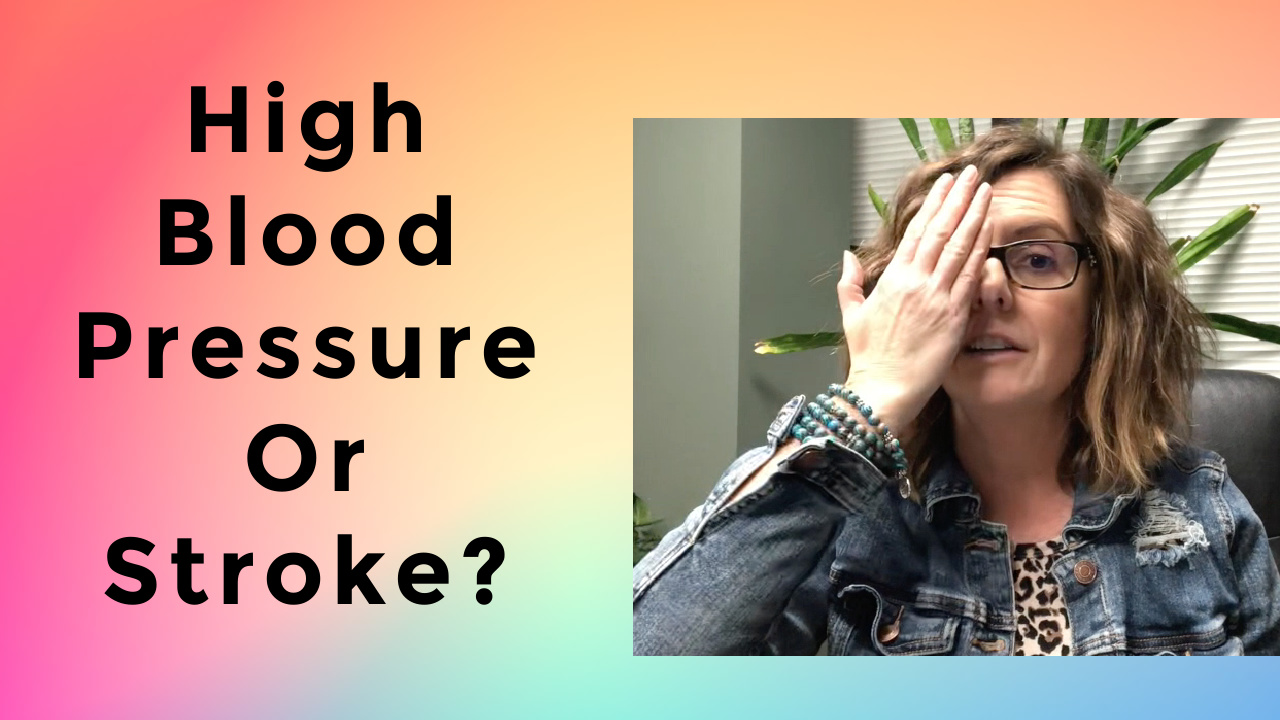High blood pressure, also known as hypertension, can cause arteries that supply blood and oxygen to the brain to either be blocked or burst. The blockage can cause the individual to have a stroke and a vessel that bursts is an aneurysm. Not only can high blood pressure induce a stroke, it can also lead to heart and kidney issues as well. If left untreated, hypertension can also affect vision and potentially lead to eye disease.
It’s important to be educated about the signs and symptoms of hypertension that can directly cause a stroke. Dr. Julie goes into detail in this video. Controlling high blood pressure will reduce the risk of stroke and reacting to a stroke quickly will reduce the risk of injury or even death. At Vision For Life, we can assist individuals who have suffered from a stroke and are now experiencing deficits in their motor, vision (sensory) and cognitive skills.
Some symptoms of stroke, based on the National Institute of Health (NIH) website, are:
- Sudden numbness or weakness of face, arm, or leg, especially on one side of the body
- Sudden confusion, trouble speaking or understanding speech
- Sudden trouble seeing in one or both eyes
- Sudden trouble walking, dizziness, loss of balance or coordination
- Sudden severe headache with no known cause
Visual field loss will vary depending on what part of the visual pathway was damaged after a stroke. When a person has suffered the effects of a stroke, the visual field can be altered, and processing problems can occur. These problems can cause a temporary loss of normal, functional field vision, which is the full area of what a person can visually see surrounding them. Common symptoms can be vision blurriness or even a complete loss, like a blind spot, in one’s vision. There are also cases when an individual is not even aware that he or she is experiencing visual field loss after a stroke has occurred.
There are a variety of ways Vision For Life can determine what therapy will be the most beneficial when visual field loss happens. If you or a loved one is demonstrating any of the following symptoms after being diagnosed with a stroke, contact us. Symptoms may include:
- Blurred vision while watching TV
- Visual neglect, a disorder that prevents an individual from attending to stimuli on one side of vision (left or right)
- Trouble scanning a page when reading
- Walking into/bumping into objects
After a thorough diagnosis, we can select the best treatment option for you or your loved one. At Vision For Life, we are able to retrain the eye-brain connection with our vision therapy program. Using Syntonics, a light therapy, we can stimulate the blind spots or any blurriness affecting a patient’s visual field. When neurons in the brain are affected from a stroke, our light therapy can help “ignite” the neurons again, helping the patient gain back some of the normal visual field. We can properly evaluate and diagnose vision loss in patients, no matter their age.
Vision therapy can be helpful in regaining 30% – 80% of a stroke victim’s vision loss. Timing is important because the quicker therapy begins post stroke the better are the chances for more visual recovery. Vision For Life will work with anyone suffering from field loss problems from a stroke and can assist them in improving their ability to read, write, work and enjoy life to its fullest. After a stroke, it’s important to seek medical treatment as well as schedule an appointment with Vision For Life for a complete functional vision evaluation. Contact us at 618-288-1489 for a complete visual consultation. You can also learn more about Vision For Life by visiting our website at https://visionforlifeworks.com/.
